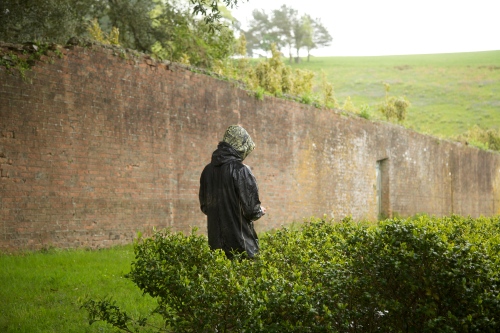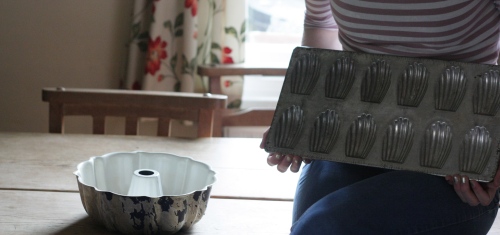Words and photographs by Harriett Monaghan
Amongst botanies unique to British soils, one acre of Cornwall is dedicated to an unfamiliar sight to most; the art of tea picking. A hidden treasure located within South West Cornwall’s countryside is the privately owned Tregothnan Estate, the only place in the United Kingdom to grow, pick, and produce its own tea.

Tea is a staple in most households around the World. It’s social, a symbol of ritual, and to some a form of solace, but to Tregothnan it is also a way of life. In 2005, the estate embraced the perfect conditions for tea growing which have been unique to their land for decades. A cool, salty climate and rich soils meant they could begin commercially growing their tea and they have never looked back.
Surrounded by winding roads, the twenty minute route to the estate from the neighbouring village in Truro feels like needlework, weaving us into its pastoral landscape. Reaching a large wooden gate, the brisk sea air of the Cornish coast is noticeably absent, an indication that we are entering a calm, serene place with the promise of over two-hundred years of untouched heritage.
Walking through the estate by foot is somewhat daunting. Soaring native trees, dense woodland and mirrored turnings mean that the dedicated workers of this estate must rely on a compassed heel. Past a rustic wood yard and a red metal-sheeted building where the tea is processed and packaged, what are we to expect from a place twinned with India’s Darjeeling? Would it be fields speckled with workers carrying slings of jade leaves on their backs, or polished machines picking quickly and with purpose? No, it is neither. On the edge of River Fal and a river-sloped bank, producing ten tons of tea a year is helped along by two French students employed on internships to the estate, given accommodation, waterproofs and wicker baskets.
Morning’s tranquil ascent is now a downpour of rain, something which doesn’t deter the picking process but promotes it. One of the workers meets us and agrees to take us to the designated spot, the oldest part of the estate hidden behind an arched mystical door. As we enter the plot of land dedicated to tea growing, the rain dances and trickles off flowers and seems to relish in such torrential conditions – the unique estate feels alive and robust. The hedgerows of Camellia Sinensus overlap with hills and engulf the two pickers in a visually striking contrast of cultures – Britain’s rural terrain is celebrated by a European friendship, it feels very special.
The bud of the plant and its two surrounding leaves are plucked from glossy stems ready for the next stage. Picking starts from dawn and lasts an hour until their baskets or hands are full. A quiet and modest task, each bud is acquired with care and attention and our preconceived thoughts are refreshingly dismissed. When finished, the leaves are taken to the processing barn for a thirty-six hour journey of drying and oxidizing- an overwhelming sensory experience. Placed side by side on special wooden drying racks in the dark, the leaves are vulnerable in their shrivelling state and the strong earthy aromas linger and are a familiar warm fragrance. Tea making is a seasonal ritual for generations, but it also seems a memory for this estate.

Outside, silence encompasses the Cornish land, still raining and laid bare to the elements, there are no outward indications of place or identity. Part of the estates charm is that it could be anywhere – there is something wildly peculiar and fascinating about it all. Marketing its tea as quintessentially English; French people pick its produce while it is twinned with India’s tea capital. An evident winning quality and blend sold in high-end stores like Macy’s and Brown’s, but it is curious.
In 2012, Tregothnan announced that due to one of the mildest winters on record, they were able to pick for twelve consecutive months, something almost unheard of anywhere other than the hot, humid climates seen in India and the Himalayas. While during my time here it has seemed foreign and exotic, I am reminded that tea is a staple in most households around the world, all differing shades of greens, grey’s and terracotta reds – Pantone swatches of preferred infusions. Tea is a common understanding.
Finished and feeling inspired, we make our way back towards the entrance having been tipped to keep straight. The rain has thinned and birds can be heard stirring in the distance – some are just waking up. It is quiet and the work that goes into this estate is palpable, freshly planted forage, well worn tools, all sustaining a beauty that compares with the natural splendour of any National Trust property. The closer we get to the wooden gateway, the more we hear the hustle and bustle of people carrying on as if this tranquil place didn’t exist. As we leave this mysterious land, precious to those who keep it, I feel just as secretive and proud as its workers do. Part of what makes the estate so successful is its role as a family – run business, not open to the public but still available for those who are most interested in visiting it, just as a secret garden.
On their bespoke website, you can book private tours with head gardener Neil Bennet, which is a great opportunity to get up and personal with the estate, which most don’t get to see. You can even finish the tour off with cream tea in their Edwardian summer house, especially beautiful in the summer months. “We are proud to represent Cornwall, and are keen to raise awareness of our unique tea plantation as we are putting the English into English tea for the first time in history.” – Abby Keverne, PR at Tregothnan.
Thirsty to say the least, our journey home becomes a visit to one of Tregothnan’s local stockists, the Cornish Shop. Buying their earl grey brew with lime green, purple and silver packaging, it tastes all the more refreshing knowing the process and its rewards. Whatever your preference may be, strong, bitter or sweet, with lemon perhaps or lashings of milk, the estate’s celebration of Cornwall life, community, natural produce and climate, is complimentary to a Cornish palette, instinctive and effortless.
Increasingly it is important to know where our food is sourced and the same applies to what we drink. It is a wonderful feeling to track the provenance of these and to feel more importantly its authenticity, so join the exclusive few that visit Tregothnan, it promises to be a visit you will never forget.



 Pre-2009, Stones was merely a stall set up in its hometown of Falmouth. They would also take their goods to St Ives for the weekly farmer’s market but after realising the impracticality of freshly baked produce being exposed to the Cornish elements on cold wintery or worst still, rainy days, Oli and Rosie hunted for somewhere to really set up shop. Now, just five years in, it’s got what Oli refers to as a ‘core’ of followers.
Pre-2009, Stones was merely a stall set up in its hometown of Falmouth. They would also take their goods to St Ives for the weekly farmer’s market but after realising the impracticality of freshly baked produce being exposed to the Cornish elements on cold wintery or worst still, rainy days, Oli and Rosie hunted for somewhere to really set up shop. Now, just five years in, it’s got what Oli refers to as a ‘core’ of followers.












